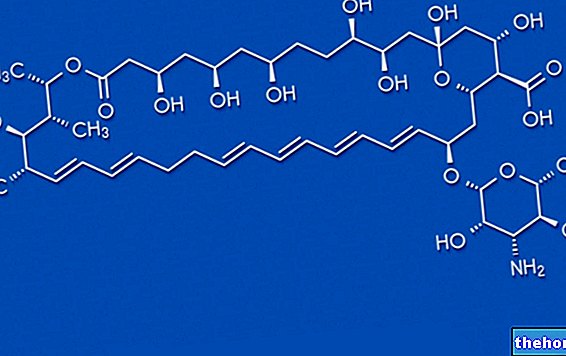
What is Pixuvri - Pixantrone?
Pixuvri is a medicine that contains the active substance pixantrone. It is available as a powder that is made up into a solution for infusion (drip into a vein).
What is Pixuvri used for - Pixantrone?
Pixuvri is used to treat adult patients with B-cell non-Hodgkin's lymphoma, which is a cancer of the lymphatic tissue (part of the immune system) that affects a type of white blood cell called 'B lymphocytes' or 'B cells'. Pixuvri is used when the lymphoma is aggressive and has come back or has not responded to chemotherapy treatments (medicines used to treat cancer).
The medicine can only be obtained with a prescription.
How is Pixuvri used - Pixantrone?
Pixuvri should be administered by a physician experienced in the use of anticancer medicines and who has the necessary equipment and facilities to monitor the patient.
The dose of Pixuvri is calculated based on the patient's body surface area (calculated from the patient's weight and height). The recommended dose is 50 mg / m2 to be administered by intravenous infusion over at least 60 minutes on days 1, 8 and 15 of a 28 day treatment cycle. Pixuvri can be given for up to six cycles. In patients who have side effects or who have very low blood levels of neutrophils (a type of white blood cell that fights infection) and platelets (components that help blood clot), the dose may need to be reduced or delayed. the treatment.
How does Pixuvri - Pixantrone work?
The active substance in Pixuvri, pixantrone, is a cytotoxic medicine (a medicine that can kill dividing cells, such as cancer cells) belonging to the 'anthracyclines' group. It works by interfering with the DNA in cells, preventing them from making more copies of DNA and making proteins. This means that the cancer cells in B-cell non-Hodgkin's lymphoma, unable to divide, eventually die.
How has Pixuvri been studied?
The effects of Pixuvri were first tested in experimental models before being studied in humans.
Pixuvri was compared to other chemotherapy treatments in one main study involving 140 adults with aggressive type B non-Hodgkin's lymphoma who had previously received at least two other treatments and whose cancer had come back or he had not responded to treatment. Patients were given six courses of Pixuvri or another approved cancer medicine chosen by the treating physician.
The main measure of effectiveness was the number of patients who had fully responded to treatment.
What benefit has Pixuvri shown during the studies?
Pixuvri has been shown to offer benefits to patients with an aggressive form of B-cell non-Hodgkin's lymphoma: 20% of patients fully responded to Pixuvri (14 out of 70 patients) compared to 5.7% of patients treated with other medicines ( 4 out of 70 patients).
What is the risk associated with Pixuvri Zentiva?
The most common side effects of Pixuvri (seen in more than 1 in 10 patients) are neutropenia, leukopenia and lymphopenia (low concentrations of different types of white blood cells in the blood), thrombocytopenia (low concentrations of blood platelets), anemia (low concentrations blood cells), nausea, vomiting, skin discoloration (discolouration of the skin), hair loss, chromaturia (abnormal urine discoloration) and asthenia (weakness). For the full list of side effects reported with Pixuvri, see the package leaflet.
Pixuvri must not be used in patients who are hypersensitive (allergic) to pixantrone or any of the other ingredients. It must not be used in patients with severe liver problems and in patients in whom the bone marrow produces exceptionally low levels of blood cells. Patients being treated with Pixuvri should not be vaccinated with vaccines containing attenuated (live weakened) viruses.
Why has Pixuvri - Pixantrone been approved?
The CHMP concluded that patients with aggressive non-Hodgkin B-cell lymphoma responded better to treatment with Pixuvri than other anticancer therapies. In addition, those treated with Pixuvri survived longer without their disease getting worse. The CHMP also considered the severity of the disease and the lack of adequate alternative treatments for patients in whom non-Hodgkin's B-cell lymphoma has come back or has not responded to other chemotherapy treatments. The side effects of the medicine are short-term and appear manageable.
However, the Committee noted that more data is needed on the benefits of Pixuvri in patients who have previously received therapy with rituximab (another medicine frequently used to treat lymphoma). The CHMP concluded that Pixuvri's benefits outweigh its risks and recommended that it be given a 'Marketing Authorization' for the medicine.
Pixuvri has been given "" conditional approval. This means that more information on the medicine is awaited, particularly on the benefits for patients who have previously received rituximab treatment. Each year the European Medicines Agency will review new ones. any information available and, if necessary, this summary will be updated.
What information is still awaited for Pixuvri?
The company that makes Pixuvri will conduct a study to further investigate the effects of using Pixuvri in patients who have previously received rituximab treatment.
More information about Pixuvri - Pixantrone
On 10 May 2012, the European Commission issued a "marketing authorization" for Pixuvri, valid throughout the European Union.
For more information about Pixuvri therapy, read the package leaflet (included with the EPAR) or contact your doctor or pharmacist.
Last update of this summary: 03-2012.
The information on Pixuvri - Pixantrone published on this page may be out of date or incomplete. For a correct use of this information, see the Disclaimer and useful information page.























-nelle-carni-di-maiale.jpg)




